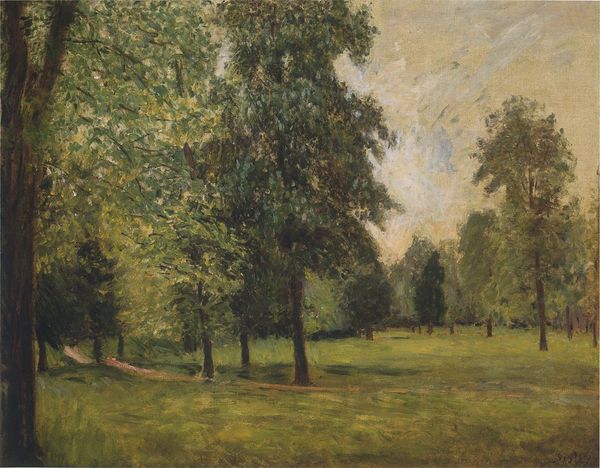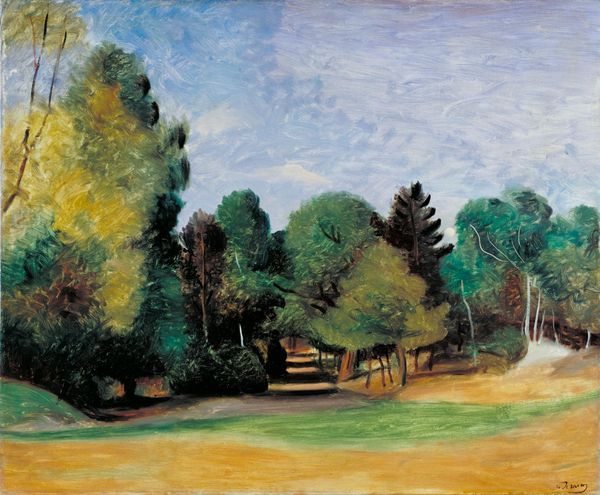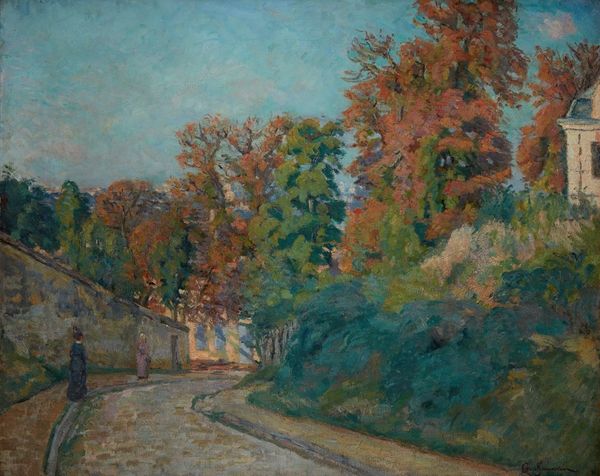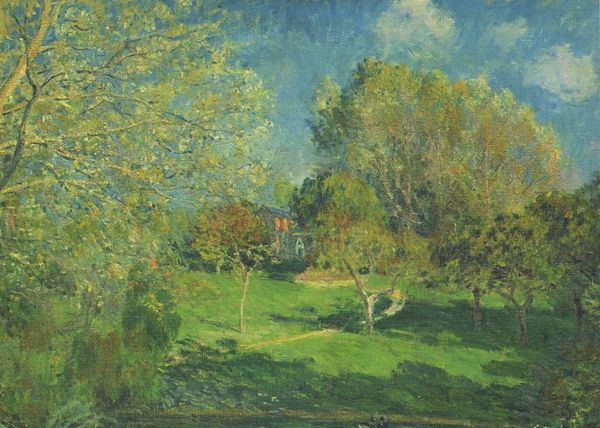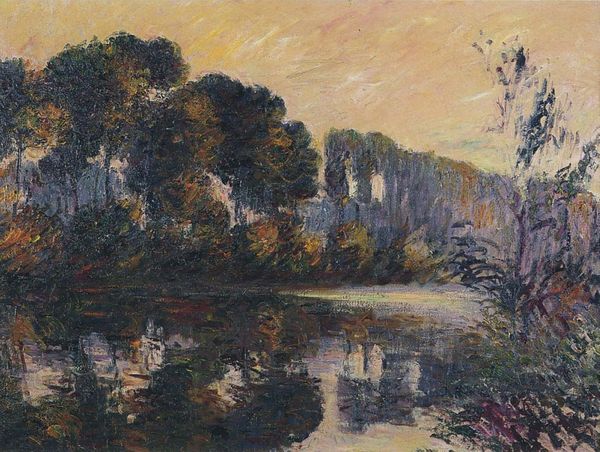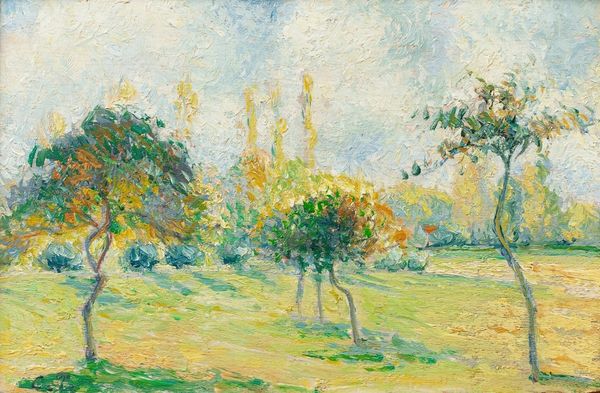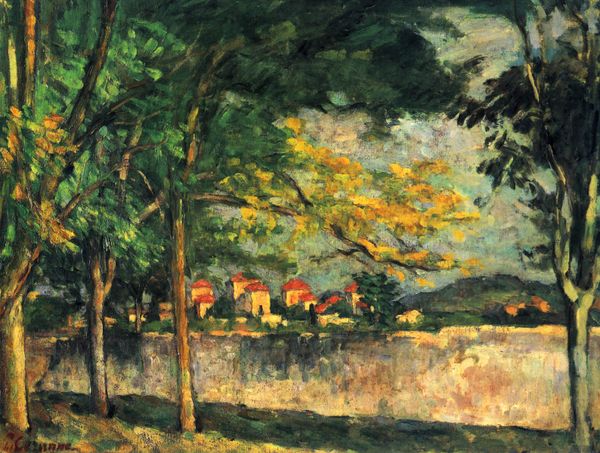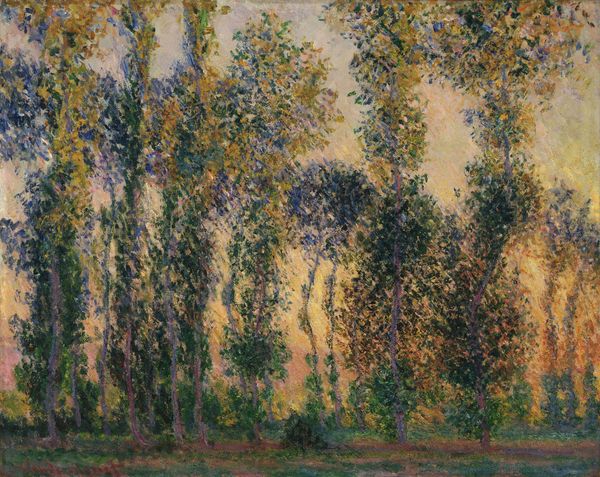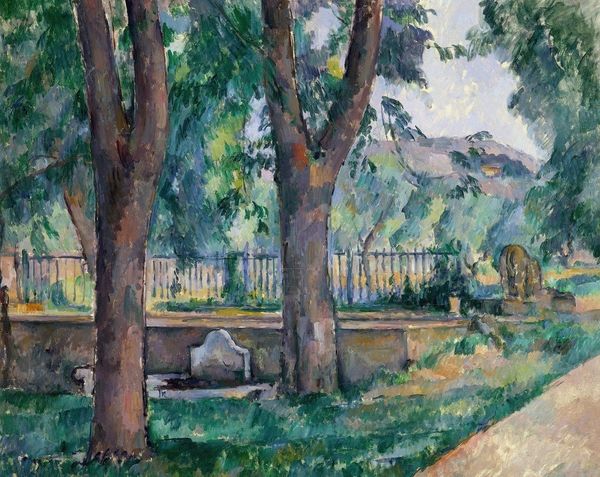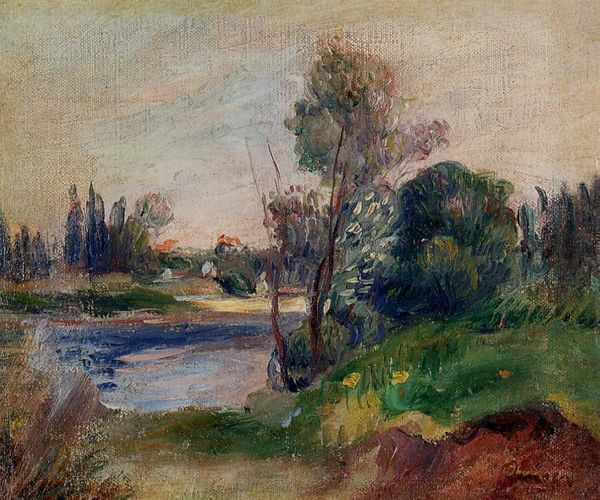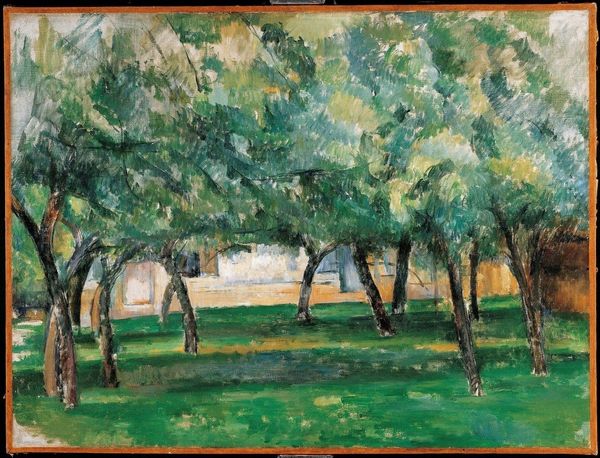
Copyright: Public Domain: Artvee
Curator: This is Pierre-Auguste Renoir’s “Versailles,” painted sometime between 1900 and 1905. The medium is oil on canvas, and you can really see Renoir’s signature impasto technique. Editor: It feels overcast, even a bit melancholic, doesn't it? The colours are muted, with an emphasis on earth tones. But there’s also a sense of the grand scale of the palace gardens. Curator: Absolutely. Versailles, as a subject, represented more than just a landscape. By this period, it already carried centuries of heavy cultural baggage, from royal extravagance to the French Revolution, so choosing to depict it links Renoir to that complex history. Considering the materials, oil paint itself had become incredibly industrialized by the turn of the century, readily available and cheaper than ever, widening the possibility for even middle class citizens to explore art creation, challenging former aristocratic strongholds and even changing artist workshops dynamics. Editor: Right, and we can't ignore what Versailles symbolized: power, privilege, and ultimately, the stark inequalities that fueled revolution. Renoir's choice to depict this location invites us to consider those socio-political tensions through the lens of his impressionistic style. Curator: Indeed. And if you observe the brushstrokes, the trees are rendered with short, broken touches of paint. We understand through Impressionism that it is an ongoing interest of the movement: observing light and its effect on surfaces and perception. We also know the accessibility factor, the “plein air” availability allows him to situate and create art outside workshops, so there's a material freedom, allowing to go outdoors and not rely entirely in artificial work ambiance. Editor: And what of that statue, almost obscured by the trees on the right side? It reminds me that the bodies that were allowed in that palace belonged mostly to a select group—ones of noble heritage or with certain social access. Is this just Renoir aestheticising a past, or is he subtly engaging with those dynamics of class and representation? The sky mirroring the stone floor of the court also gives some nice contrast. Curator: That’s a compelling question. I think understanding the materials used by Renoir in relationship with the era it was painted provide critical and sociopolitical information, just as a way of concluding our small chat. Editor: Agreed, the materials alongside what’s been displayed truly offer an experience of historical reflection, doesn't it?
Comments
No comments
Be the first to comment and join the conversation on the ultimate creative platform.
